One of the Sweetest of God’s Children
On the 80th anniversary of the D-Day Normandy landings, we are highlighting a lesser known story from Barns-Graham’s life.
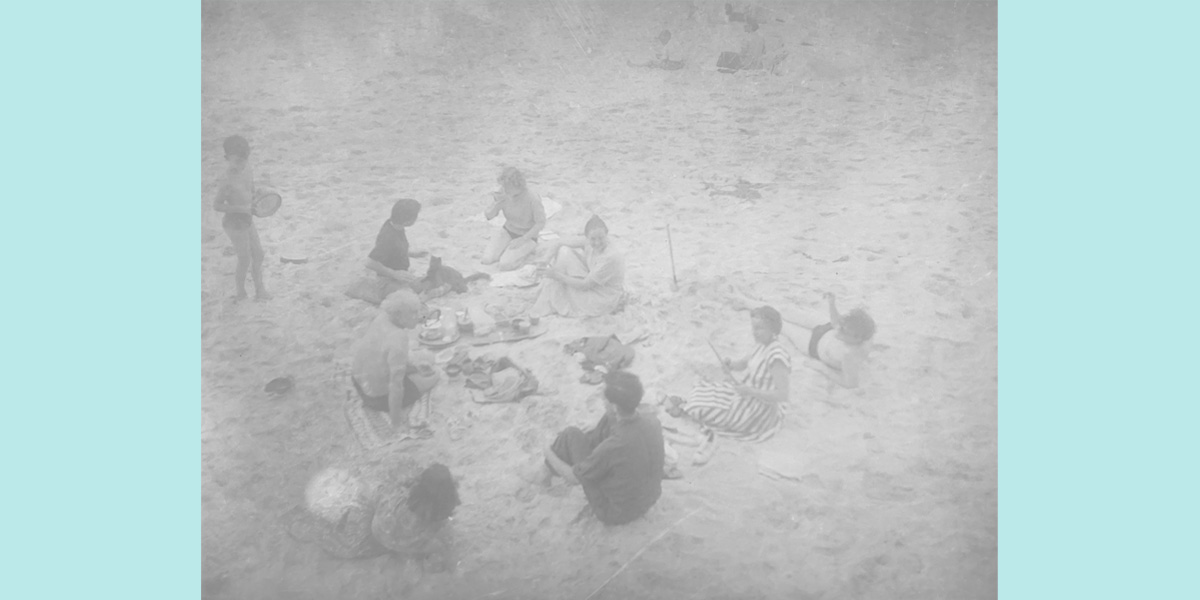
A scanned negative of Barns-Graham and Wagner (bottom right and bottom centre) on a beach with friends
American Infantry in Cornwall
For nearly a year between May 1943 and June 1944, American soldiers in the 115th, 116th and 175th infantry regiments were stationed in Cornwall – in St Ives and the surrounding areas – while they were waiting to be deployed to France. By May 1943, Barns-Graham had been living in St Ives for the best part of three years; she had settled into her Porthmeor studio, and was becoming a well-respected member of the St Ives Society of Artists. It was at this time that she met Private Robert Wagner, of the 175th infantry.
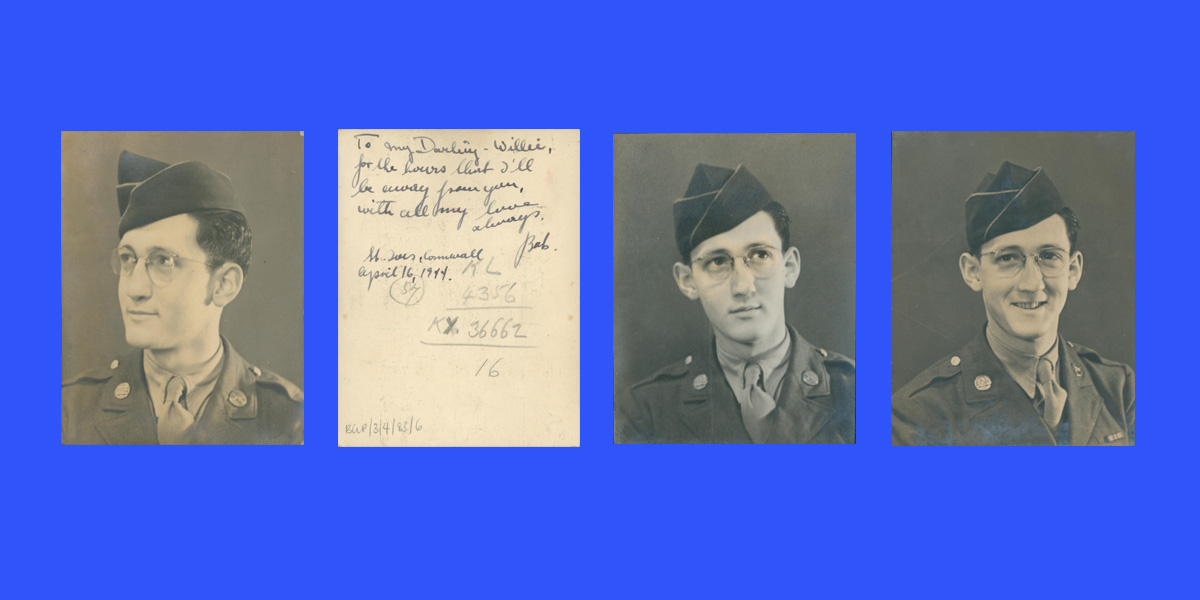
Portrait photos of Robert Wagner in uniform with dedication to Barns-Graham on the reverse of one. BGP/3/4/83
Escape and Return
Robert Wagner was a Jewish German who, in 1938 at the age of 16, had escaped Germany to America, via Holland. With the help of a cousin, he made his way to New York, where his Uncle’s family had also fled to. He’d had to leave behind his mother and sister in Berlin, and by 1943, he had enlisted as a Private in the US army. Most likely he hoped to contribute to the liberation of his sister and mother from Nazi persecution (as had many other German Jewish men who escaped to America and enlisted in the army, later known as the Ritchie Boys).
His mother Emmi Lichtenstein, and sister Marianne Wagner, had been forcibly moved from their home in Berlin to Theresienstadt Ghetto near Prague, and then to Auschwitz concentration camp where they were both murdered in early 1943. A Stolpersteine plaque has been erected at their Berlin address in their memory, which can be found here.
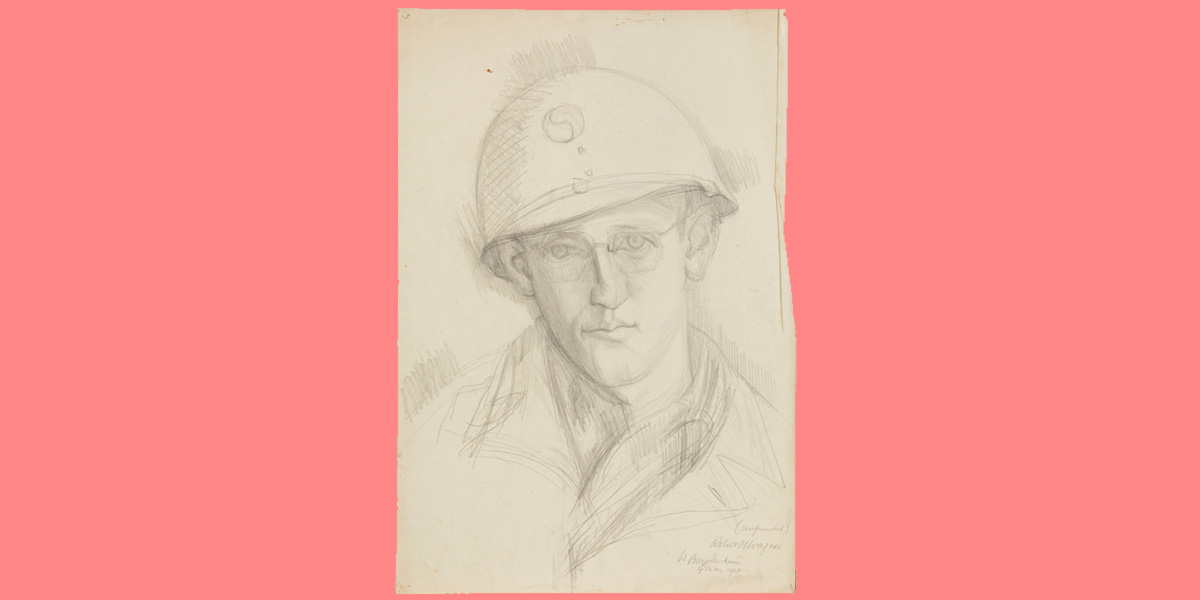
Unfinished drawing of Robert Wagner, 1944, pencil on paper, BGT7613
Unfinished Portrait
Barns-Graham met Wagner at the Palais de Danse in St Ives at the end of October 1943; from the letters sent between them after Wagner had left Cornwall, it is clear that they became very close very quickly.
While Wagner was in St Ives, Barns-Graham sketched his portrait; it seems to be one that Wagner was fond of, asking her to include it in the next submission of works to the RSA summer exhibition. In a letter from 17th May 1944, he wrote: “Are you going to put the finishing touches on the drawing – honestly I thought it was quite good.” However, Barns-Graham was not able to finish it before Wagner left for Normandy, and sadly he was never to return to St Ives.
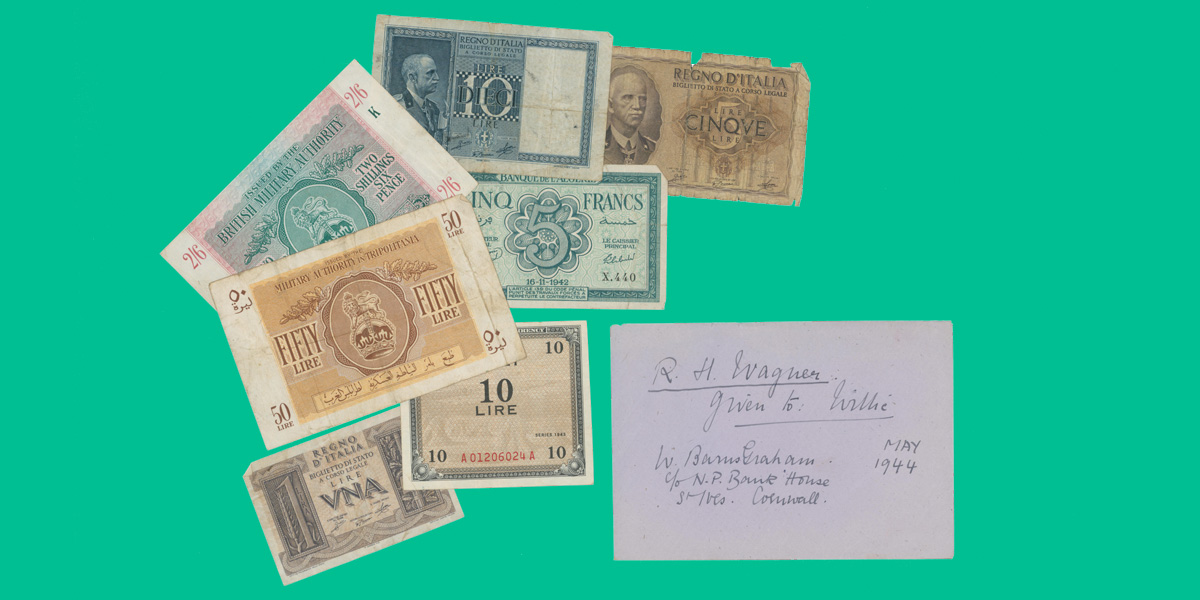
Allied Military Currency Left by Wagner with Barns-Graham
Two Knapsacks and a Cardboard Box
On leaving St Ives, Wagner entrusted much of his personal property, and the responsibility of contacting his family and friends abroad should anything happen to him, to Barns-Graham. She carefully listed the contents of two knapsacks and a cardboard box, amounting to more than 70 items of clothing, books, and other possessions, that she noted as being kept in her studio. As well as practicalities, the couple exchanged mementos on their departure. Barns-Graham gave Wagner a gold heart-shaped locket that she had inherited from her grandmother, and Wagner gave her a signet ring, a signed American dollar bill, and a dedicated photograph.

A dollar bill signed by Robert Wagner
Wishes of Bravery and Hope
The letters exchanged between the couple during the first month of Wagner’s departure are extremely tender, and full of assurances and wishes of bravery and hope on both sides.
Barns-Graham filled her letters with up-beat news of St Ives and the acquaintances that they had made together. She updated him on the progress she was making with paintings. However, they were also filled with concern for Wagner’s safety. In a letter sent on 31st May, she wrote:
“I wish I could do something for you, its quite tough not hearing – but never mind that’s something neither you or I can help – and it’s possibly all for the good of the cause… We’re living in times that will make big history, & although my heart will be anxious, let us hold our heads high.”
In his last letter to Barns-Graham, dated 29/05/1944, Wagner wrote:
“The circumstances under which we lived in the last eight months were somewhat difficult – yet I realize (sic) how happy I was, how contented I was, knowing that someone really cared… You’ve helped me over a very difficult period of my life – a constant change of life… but I realized just what I had to give up would I ever leave you.”
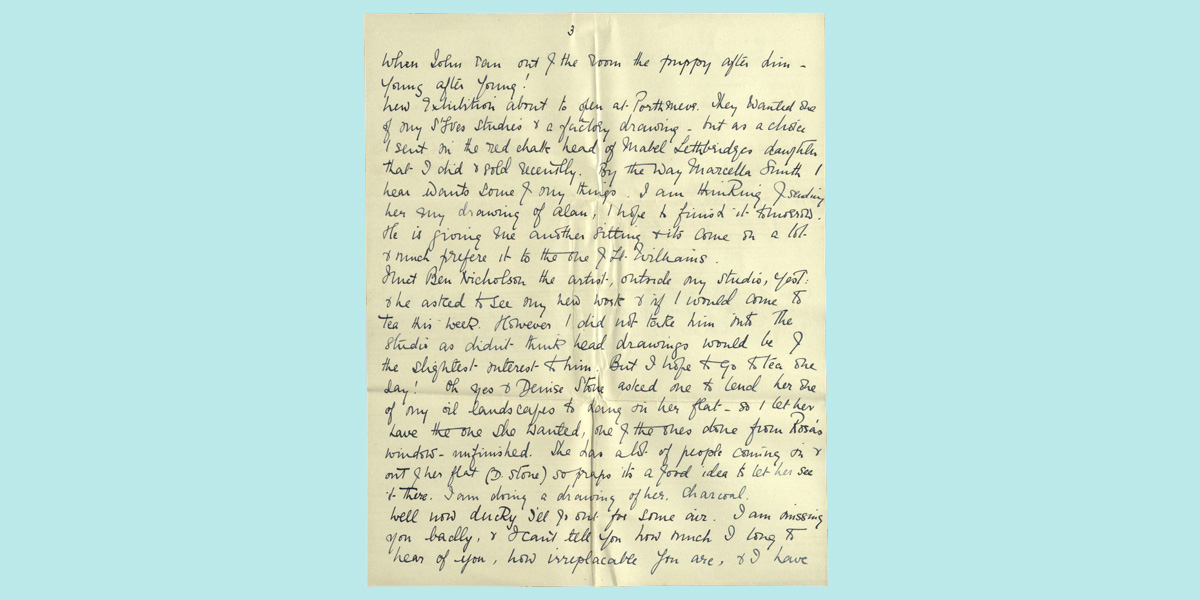
Part of a letter from Barns-Graham to Wagner, 2 July 1944, WBG/1/3/16
Leaving No Stone Unturned
Barns-Graham continued writing to Wagner throughout June and July, her letters becoming shorter and containing less and less upbeat encouragement, and more concern for Wagner’s safety as she continued to wait to hear from him. At the same time, reports and rumours were starting to circulate about the massive causalities suffered by the Allied forces during the D-Day landings. On 13th July she wrote to him again “terribly distressed”; complaining that “Having had cheering news of you I now have very conflicting one… I am now leaving no stone unturned to have correct information.” It’s difficult to imagine the frustration and unbearable distress that Barns-Graham, and many others with loved ones caught up in the conflict, must have felt in trying to trace reliable information in the face of slow, unreliable, and often absent mail. This was especially the case for those, like Barns-Graham, who would not have been recognised as official next of kin. Indeed, in her quest to find information about Wagner, she claimed that she was his fiancée when writing to the Captain of his regiment.
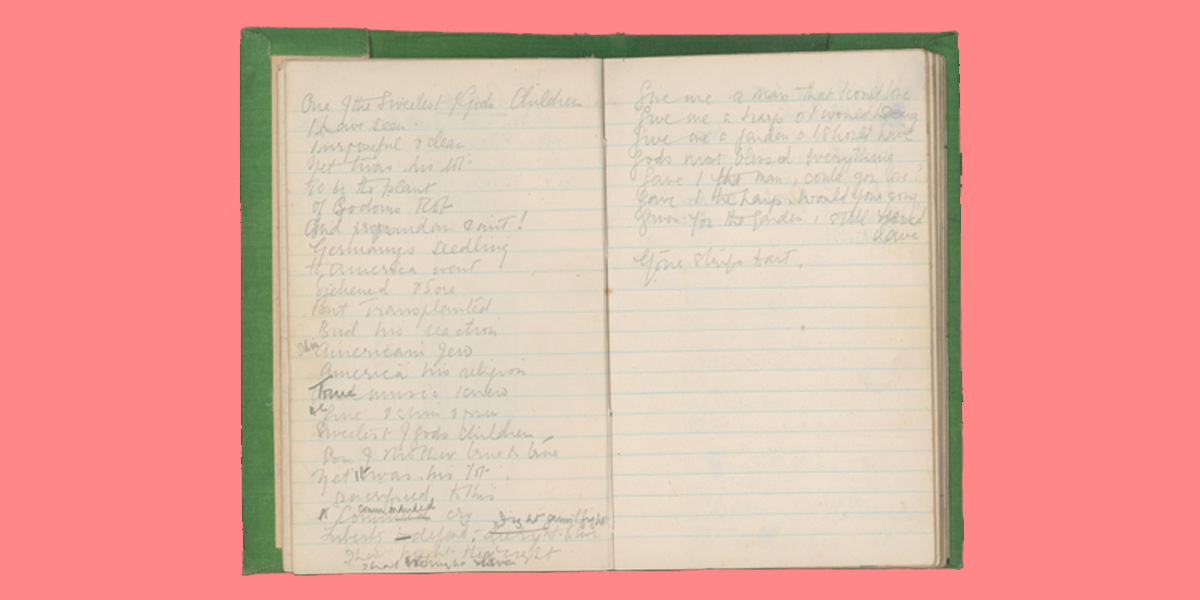
Poem, One of the Sweetest of God's Children, written by Barns-Graham in 1944
Killed in Action
In the end, Barns-Graham was able to hear from friends still in the unit that Robert Wagner was killed in action on 18th June 1944. Although her correspondence to Wagner had begun returning to her bearing a “DECEASED” stamp from the end of June that year, it took her some weeks to eventually confirm that he had died. It was left to her to contact various relations and friends that Wagner had in London, America, and Australia in case they too had not yet heard the news. This included the author Phyllis Bottome, who had mentored Wagner in his debating skills while he was in St Ives. During this time, Barns-Graham composed a poem about Robert Wagner titled, One of the Sweetest of God’s Children.
Wagner’s death had a painful and lasting effect on Barns-Graham. Indeed, she carried his signet ring in her wallet for the rest of her life. In a diary entry from May 1987, she recorded that she had almost lost the ring when it fell out of her purse. It was later found in the street and was returned to her by a friend.
